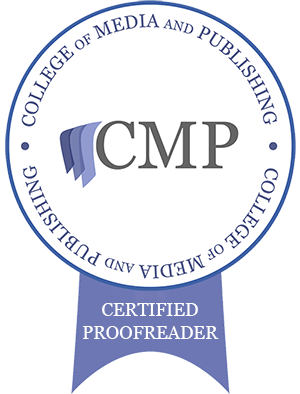
When you’re writing fiction, dialogue is an essential part of it. It is also an area that a lot of writers will struggle with. Often the dialogue is written too correctly, or there’s just simply too much of it. Writers can be prone to excessive adjectives, trying to avoid using ‘said’ too much and overcompensating. Dialogue is a common place for punctuation mistakes as well. So, without further ado, here is the essentials of writing dialogue.
Breaking the rules of grammar
Obviously you want to show you know the rules of grammar. Mistakes make you look unprofessional. However, when it comes to writing dialogue, it’s okay to break the rules of grammar. In fact, I encourage it. Why? Because people don’t talk with perfect grammar. At least, most people don’t. People speak in sentence fragments, use contractions, use slang and may hesitate or repeat themselves. Take these two examples.
“Hey, what’s that?”
“I dunno. Found it over there.”
Versus
“Excuse me. What is that you have there?”
“I do not know. I found it over there.”
See the difference? Some people might speak very formally, but the second version sounds a lot less natural and most people aren’t going to speak like that. Someone who does speak with perfect grammar and formality, is usually someone who is highly educated, extremely arrogant or not used to talking to people. If in doubt, read or listen to it out loud, and if it doesn’t sound ‘normal’, it needs changing.
Dialogue Should Serve a Purpose
Is there such a thing as too much dialogue? Yes, absolutely. If there is nothing but dialogue, a lot of the story becomes lost. You need action, you need description and depending on the POV you need internal dialogue as well. Dialogue should have a purpose in the story, whether it is exposition, character or relationship development, plot development or showing emotions and reactions to what happens in the plotline.
A lot of editors will cut back dialogue if it does not serve a purpose to the story. Even if in the real world, you would have small talk and introductions and things, if it’s not helping move the story along, some of it probably isn’t necessary. Even if you’re writing a phone conversation, you can gloss over the “Hi, how are you, how are the kids,” kind of stuff if it’s not important. You can use indirect dialogue to summarise or even just leave it out and get to the point of the conversation. If there isn’t a point, then that dialogue is probably unnecessary and you could cover it by simply saying something like: X spent twenty minutes on the phone to their sister.
Indirect Dialogue
Nice segue into indirect dialogue and when it should be used. You want to avoid repetition. If a major event happened, then one of your characters is telling someone else about it, you don’t need to write out every word they say. Your reader will get bored reading a blow by blow account when they just read a blow by blow account.
Instead, summarise using indirect dialogue. “X explained what had just happened the night before.” Then, you can get into how the character receiving the explanation responds to the news instead, which will be more interesting. It also helps you avoid writing out excessive small talk.
Dialogue Tags
He said, she said, they said. A lot of writers feel they have to avoid using ‘said’ as much as possible. It comes from trying to sound original and trying to avoid repetition, but the problem is they then start digging deep into a thesaurus looking for alternatives.
This may not sound like a problem, but if the dialogue tags are extremely colourful and varied, it reduces the impact of the content of the dialogue. It distracts the reader from what’s actually being said. A lot of the time, what you can do is use ‘said’ and use description of body language and action to show people’s emotions, or even just the words the character uses. Having the odd interesting tag can put more emphasis on important pieces of dialogue and improve the impact.
Don’t forget that if there are only two people involved in the conversation, not every line of dialogue even needs a tag. As long as you remember to put each person’s lines in a new paragraph, after a couple of lines, you can drop the tags altogether, only adding them when needed to clarify who is speaking or for emphasis. For an example, here’s an excerpt from my current WIP novel demonstrating this.
Shaine nodded, shivering a bit. “It’s gotten quite cold in here,” she said.
“Mm. We can’t start a fire, the smoke could be suffocating in such a small space,” Alonso said.
“No, we can’t. Maybe… I can’t believe I’m saying this, but maybe we should put our bedrolls together. For warmth.”
“Oh? That would work,” Alonso said.
“To sleep.”
“Yes, I know what you meant, Shaine. I’ll be a perfect gentleman, I promise.”
Shaine smiled warmly. “I know. I trust you, Alonso. I’m so glad I’m not doing this alone,” she said.
1st draft Buried secrets excerpt – by emma stewart
Conclusion
So, that’s the essentials of writing dialogue. I hope you found it helpful. It was fun getting to share a little excerpt from my first draft as well. The further I get in writing it, the more excited I am to be able to share it with the world. I’ll leave things off here and on Friday we’ll pick it up again and talk about how to format and punctuate dialogue properly.
If you want to read more, there’s plenty of previous blog posts that you might find interesting. I’ve added a directory page to separate the posts by type and I will be reworking the categories and tags to make it easier to navigate and find what you’re interested in. Remember, you can find me on Facebook, Instagram and Tiktok as well. If you want to get updated every time a new post goes live, you can subscribe below. Until next time!




Leave a Reply